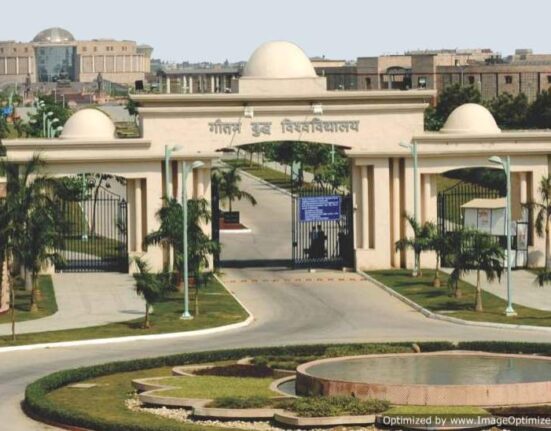INTRODUCTION
The constitution-makers of India have made this constitution both rigid and flexible. The most evident feature of this flexible nature of our constitution is the amendment procedure as provided under Article 368. This helps the laws to be effective in consonance with the changing times.
There have been 2 recent amendments to the motor vehicles act. One was in 2019 and the latest in 2022. Both deal with third-party insurance and claims management, including filing claims with the Motor Accident Claims Tribunal. The Motor Vehicles (Amendment) Act 2019 was a major attempt towards the fulfillment of this spirit of the constitution, amending the old Act of 1988. This amendment provides some major changes to the old Act. This article is an attempt to provide the reader with a greater insight into the main amendments, benefits, and disadvantages of this recent amendment to the old Act.
Motor Vehicles (Amendment) Act, 2019
The Motor Vehicles (Amendment) Act, 2019, came into effect on 1st September 2019. Moreover, it made rules more stringent for offenders, therefore creating a more rigorous punishment for them. This amendment has made it difficult for those in the habit of breaking traffic rules. Some examples of the change that has been brought about are- imprisonment of up to a month for driving errors. Additionally provision for imprisonment of up to 6 months for accidents caused by rash drivers etc.
Objective
With every step towards increased urbanization, it is evident that the traffic on roads has increased. Nowadays, each household in almost every city or town has at least one motor vehicle. With this increasing traffic on roads, the probability of accidents increases. This probability matches reality. The number of road accidents is on the rise.
Salient Features of the Motor Vehicles Amendment Act
Let’s see the Salient Features of the Motor Vehicles Amendment Act, of 2019.
Compensation for victims of road accidents:
The Bill raises the minimum compensation for hit-and-run cases as follows:
(i) In the event of death, from Rs 25,000 to Rs 2 lakh rupees.
(ii) From Rs 12,500 to Rs 50,000 in the case of serious injury.
Safety on the Road:
This Amendment vigorously promotes the increased penalty for traffic rule violators. This is done hoping that the increased fine will make drivers more alert and cautious on the roads. This amendment establishes stricter penalties for offenses. These offenses include such as juvenile driving, drunken driving, excessive speeding, overloading, and driving without a license. This Amendment also increases the penalties for drivers who do not wear helmets.
Road Safety and Environmental Protection
If the vehicles are deemed unfit for road use due to environmental damage and thus endangering the health of others, they must be returned to the vehicle’s manufacturer. Henceforth, the manufacturers are directed by this amendment to take back these vehicles. Additionally, to either reimburse or replace the defective vehicle with one of a similar make and model.
National Road Safety Board
Another significant feature of this Act is the provision for the establishment of a National Road Safety Board. This board is under the control of the central government. Moreover, this board is supposed to advise state governments as well as the federal government on traffic management and road safety issues.
The Motor Vehicles (Amendment) Bill, 2022 was introduced in Rajya Saba on December 09, 2022. The Bill seeks to amend the Motor Vehicles Act, of 1988. The Motor Vehicles Act, 1988 [Act No. 59 of 1988] contained specific timeframes under sub-section (3) of section 166 for filing an application for compensation in respect of accidents before the Motor Accidents Claims Tribunals. However, those periods of limitation were subsequently removed by omitting sub-section (3) of section 166, vide section 53 of the Motor Vehicles (Amendment) Act, 1994. This expunging of the timeframe might have been made by taking into consideration the hardships faced by the victims of the accidents in complying with the said time limit. Thenceforth, the victims of accidents have been at liberty to file applications for compensation before the Motor Accident Claims Tribunals without reckoning the period between the date of the accident and the filing of the application.
Benefits
- The main benefits of the amendment Acts are as follows-
- E-Governance is the major highlight of this amendment. With this, it is no longer necessary to have certain specified educational qualifications for acquiring transport licenses. This provides online learning for licenses and increases the driving license’s validity period.
- The biggest benefit of this amendment for the ordinary man is the increase in compensation to victims and their families. It also include quicker insurance facilities.
- Provisions have been made to improve the registration process of vehicles by making this process more convenient with the use of ‘The Sarathi’ and ‘Vahan’ platforms. Provisions have been made to enable registration of vehicles at the end of the dealer. Also, temporary registrations have been discouraged.
- With stricter rules on the fitness of vehicles, the air pollution level in cities is expected to significantly drop.
- With digitalization and e-governance, the system is expected to be more efficient in its undertaking, minimizing risks.
Conclusion
As most states have imposed the motor vehicle (amendment) bill to make it a more easy-going process as we are in the 21st century the whole world is working and performing digitally which reduces their burden of work and helps in maintaining records in the form of data. Moreover, the government has also taken a bold step to start performing digitally and strictly to maintain records by all official authorities. Also, as we compare with old rules and regulations it fares effectively in a lesser period of time, and transparency is also maintained.
The central government has recently ordered a significant increase in fines and penalties for individuals who violate traffic rules. This decision aims to instill a sense of fear in people, thereby reducing the instances of rule-breaking. Additionally, an important change introduced by this policy is the acceptance of soft copies as valid substitutes for physical appearance when presenting documents.
Moreover, the general public has raised several concerns in response to these developments. They argue that if heavy fines are being imposed, the government should also focus on improving crucial aspects such as road conditions, medical facilities, and roadside assistance, ensuring fixed response times and distances. By addressing these issues, the authorities can create a more comprehensive and effective system.
In addition, another point of the issue has been raised about enhancing corruption increasing penalties, however, will lead to corruption after certain limits it’s become difficult for the general public and this might lead to benefits to crops if they don’t do their job wisely so ultimately corruption prevails.
References
- Motor Vehicles (Amendment) Bill 2019: Know all about key …www.urbantransportnews.com › Road Transport
- The Motor Vehicles (Amendment) Bill, 2019 | PRSIndiawww.prsindia.org › bill track › motor-vehicles-amendment…
- Motor Vehicles (Amendment) Act 2019: Key Features and …www.jagranjosh.com › … › Current GK
- These new Motor Vehicle Act laws hike driving penalties from
- Motor Vehicles Amendment Act, 2019 – Magzterwww.magzter.com ›
To know about the Laws regulating Travel & Tourism Services In India: Click Here







Leave feedback about this